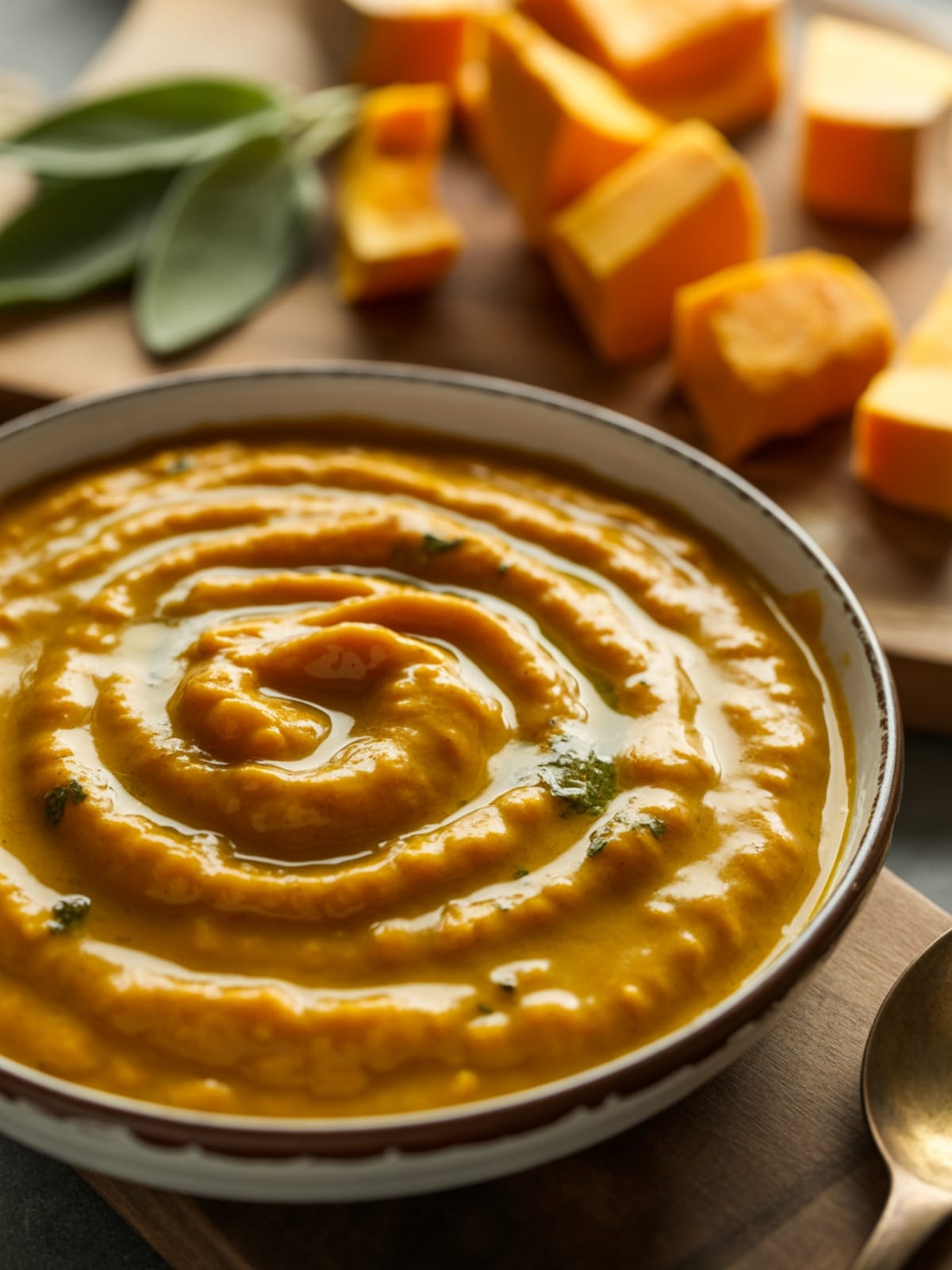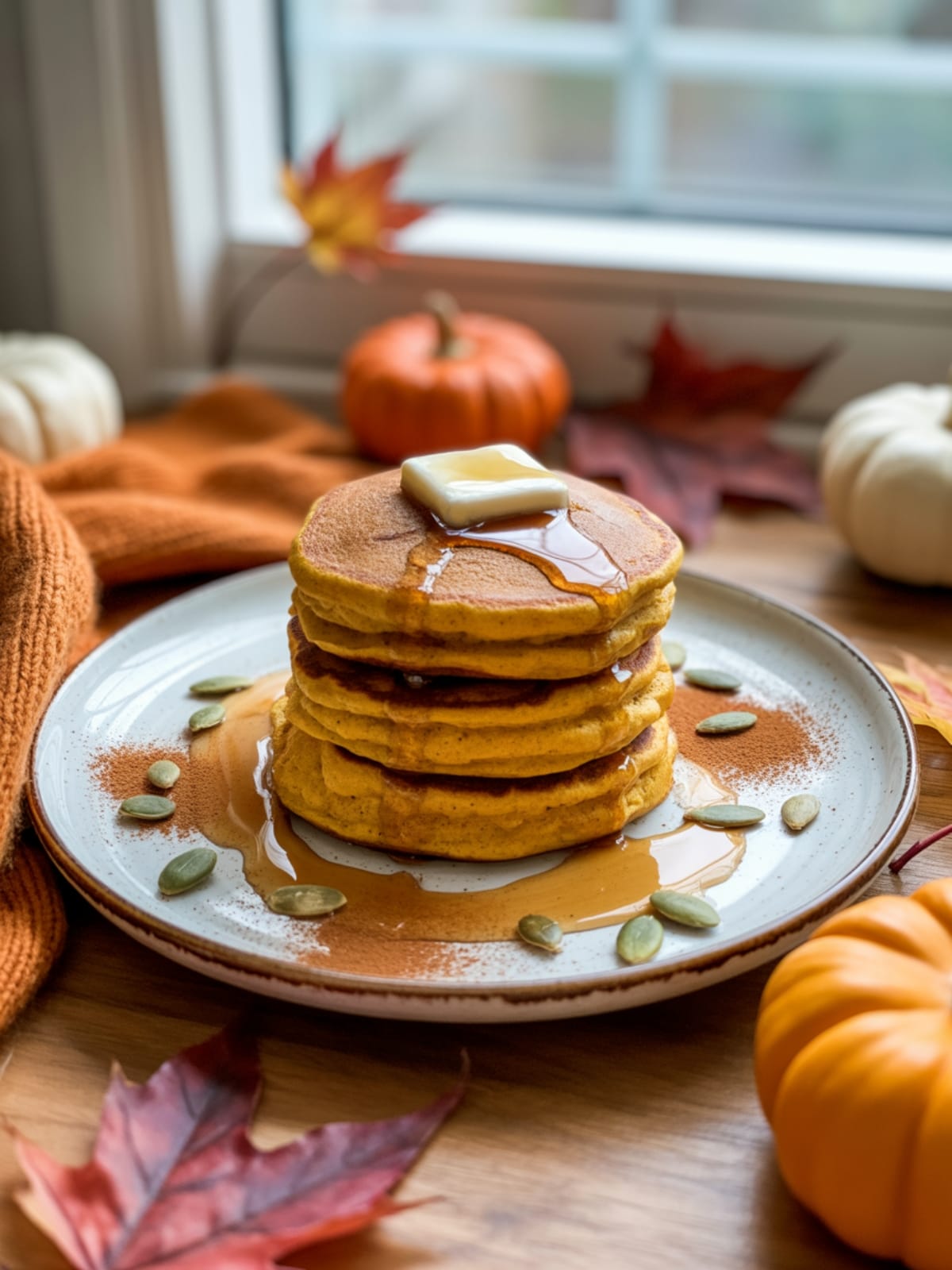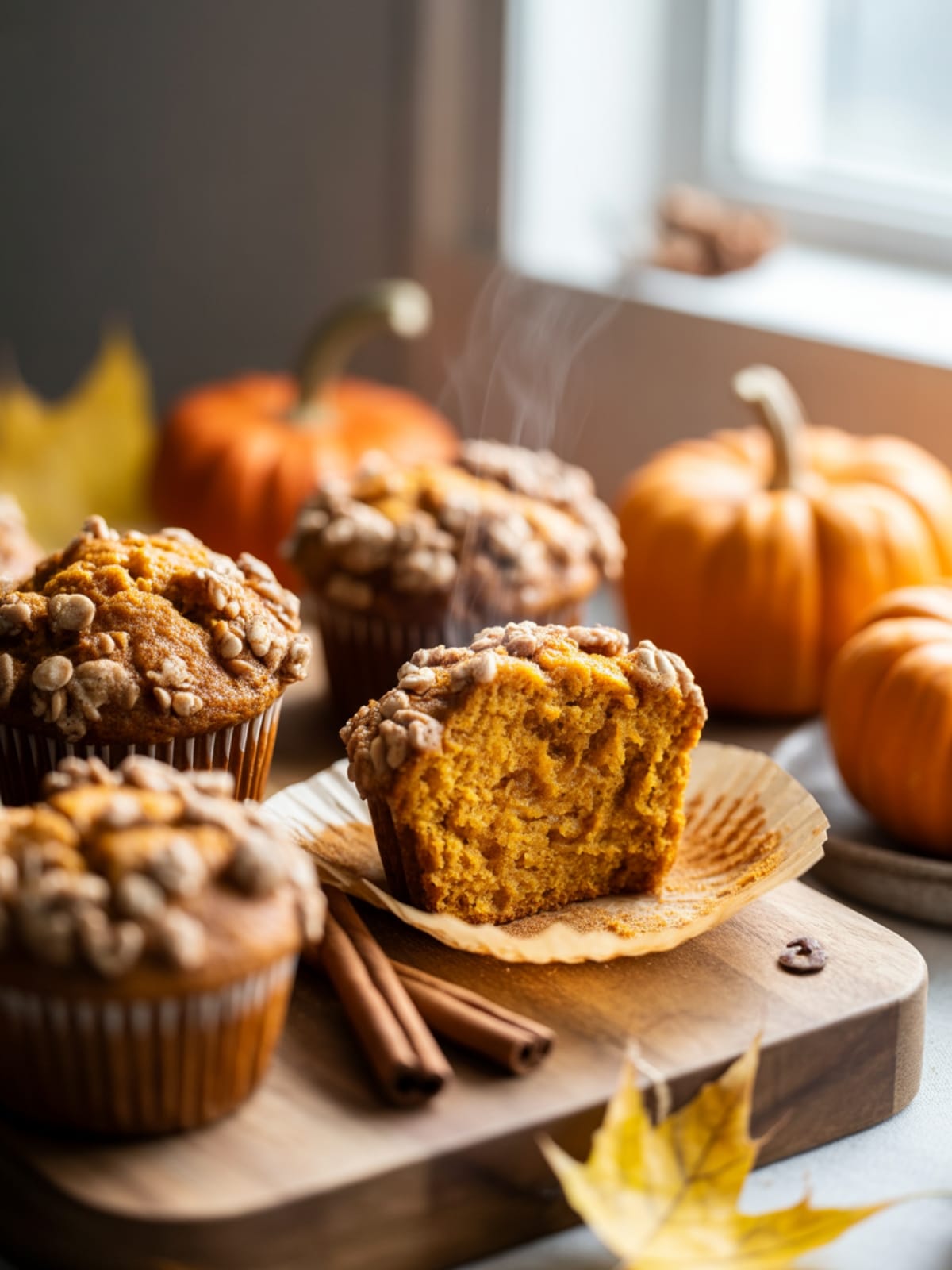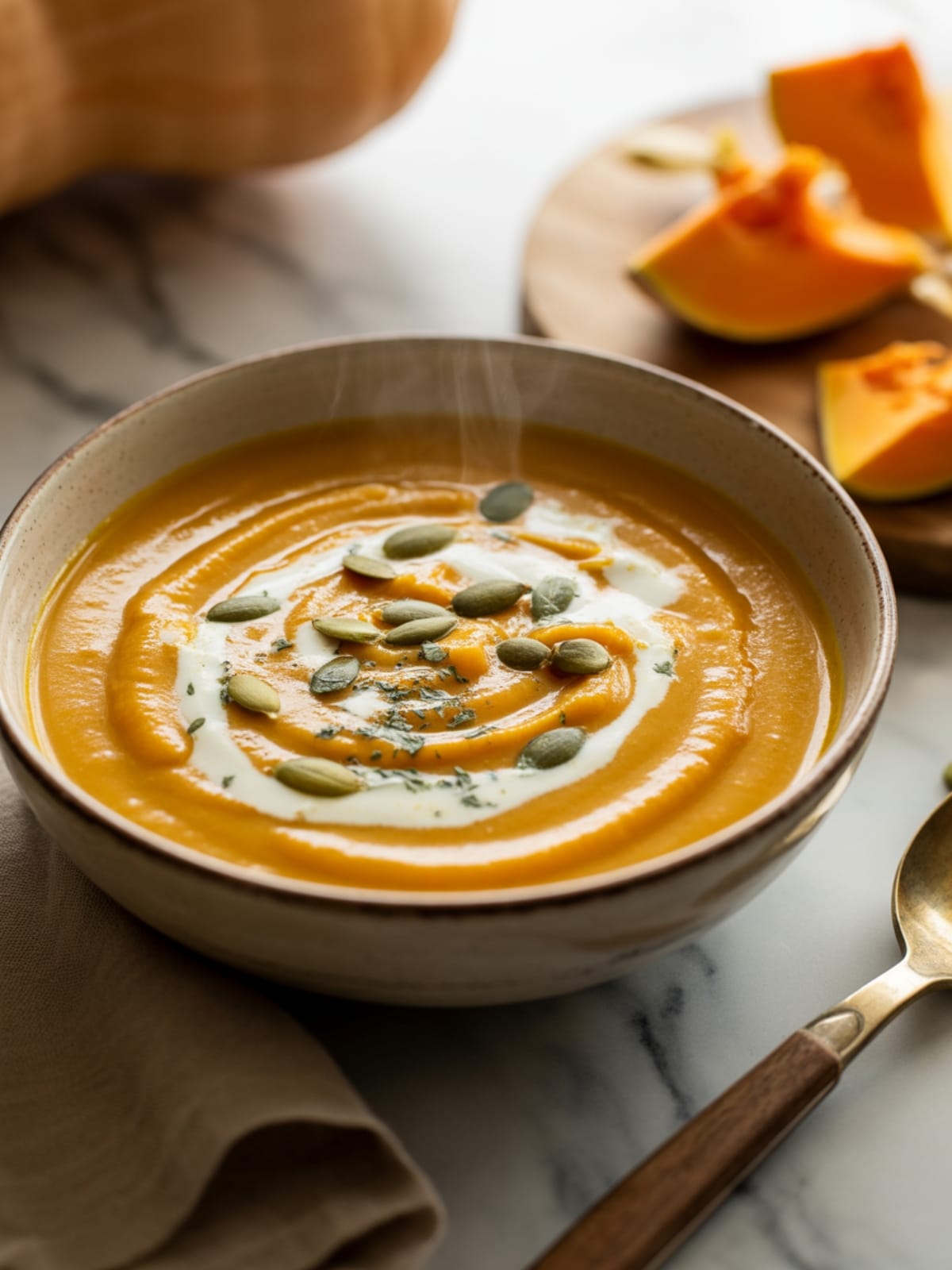Imagine transforming a humble bag of frozen butternut squash into the creamiest, most luxurious pasta sauce you’ve ever tasted—without a drop of cream! This butternut squash pasta sauce is my secret weapon for those evenings when I crave comfort food but don’t want the heaviness of traditional cream sauces. The natural sweetness of butternut squash creates a velvety texture that clings beautifully to pasta, while a careful balance of savory elements keeps it from tasting like dessert.
What makes this sauce truly special is how it turns a convenient freezer staple into something that tastes like you spent hours in the kitchen. Trust me, once you try this, you’ll be keeping frozen butternut squash on hand year-round!
Why This Recipe is Awesome
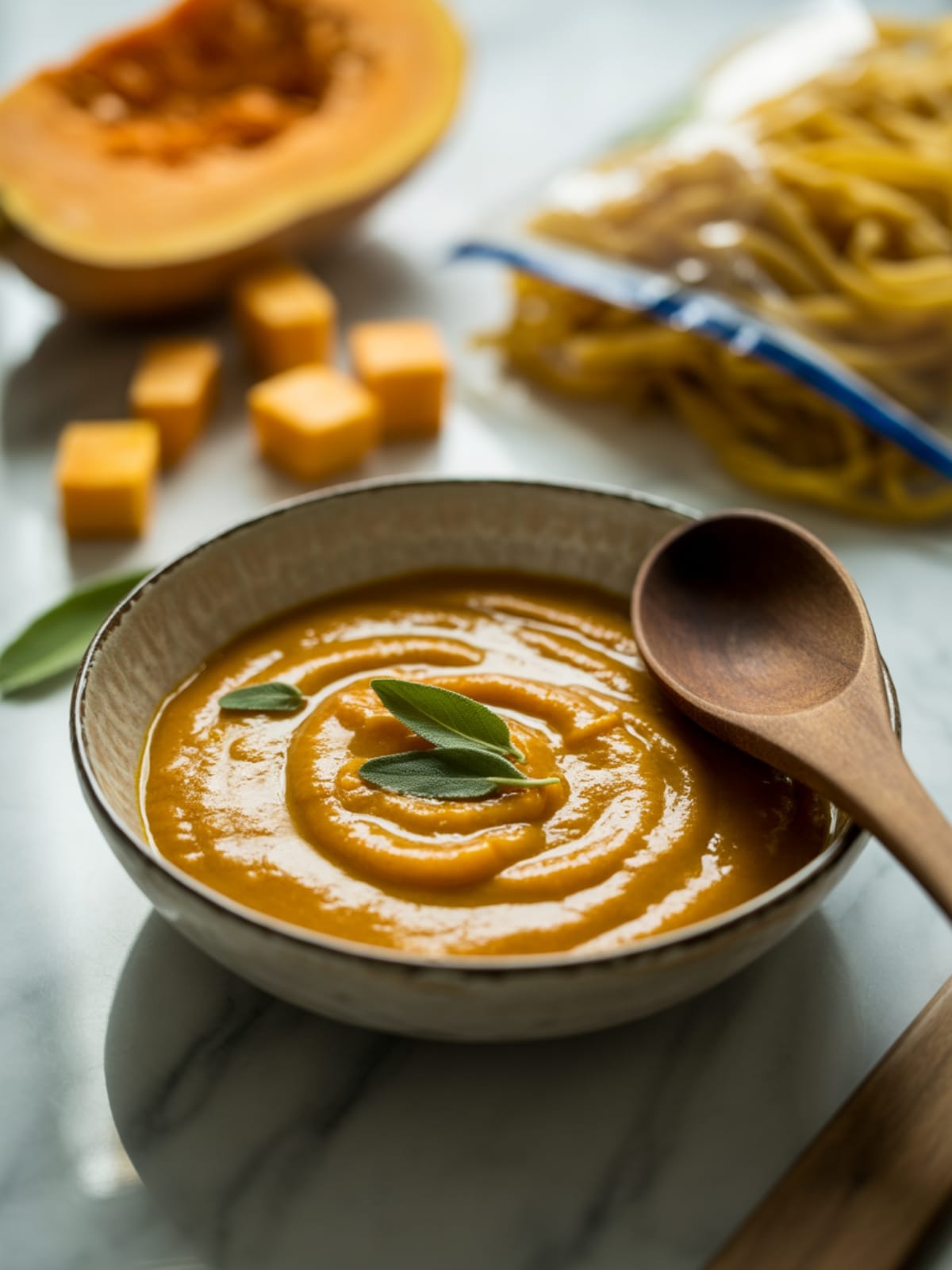
This butternut squash pasta sauce stands out for so many reasons. First, it creates a silky, creamy texture without any dairy whatsoever—perfect for those with lactose intolerance or following a vegan lifestyle.
The use of frozen squash is a game-changer, eliminating the intimidating task of peeling and cutting a whole butternut squash (which can be quite the arm workout!). The flavor profile is perfectly balanced—naturally sweet from the squash but grounded with savory elements like garlic, herbs, and vegetable broth. It’s also incredibly versatile, working beautifully with any pasta shape and serving as an excellent base for adding protein or additional vegetables.
From a nutritional standpoint, you’re getting a vitamin-packed sauce that feels indulgent but is actually quite wholesome. And perhaps best of all, it comes together in about 20 minutes, making it faster than many jarred sauces but with infinitely better flavor.
Equipment needed: Blender or food processor, large saucepan, wooden spoon

Butternut Squash Pasta Sauce
Ingredients
- 1 pound 16oz frozen butternut squash cubes
- 3 tablespoons olive oil
- 1 medium onion diced
- 4-5 cloves garlic minced
- 1 cup vegetable broth low sodium preferred
- 1 tablespoon nutritional yeast adds cheesy flavor without dairy
- 1/4 teaspoon ground nutmeg
- 1 tablespoon fresh sage chopped (or 1 teaspoon dried)
- 1 teaspoon dried thyme
- Salt and black pepper to taste
- 1-2 tablespoons lemon juice
- 1 pound pasta of choice for serving
Instructions
- Prepare the squash: If time allows, thaw the frozen butternut squash for about 15 minutes before cooking to ensure even heating. If you’re in a hurry, you can use it straight from frozen, but cooking time may increase slightly.
- Sauté the aromatics: Heat olive oil in a large saucepan over medium heat. Add diced onion and cook for 3-4 minutes until softened and translucent. Add minced garlic and cook for another 30 seconds until fragrant, being careful not to burn it.
- Add the squash: Add the butternut squash to the pan and stir to combine with the onions and garlic. Cook for 2-3 minutes, stirring occasionally.
- Add liquids and seasonings: Pour in the vegetable broth, then add nutritional yeast, nutmeg, sage, and thyme. Season with a pinch of salt and black pepper. Bring to a gentle simmer.
- Simmer until tender: Cover and simmer for about 10 minutes, or until the butternut squash is completely soft and can be easily mashed with a fork. If using completely frozen squash, this may take 12-15 minutes.
- Blend until smooth: Transfer the mixture to a blender or food processor and blend until completely smooth and creamy. Be careful when blending hot liquids—work in batches if necessary and allow steam to escape.
- Finish the sauce: Return the blended sauce to the pan over low heat. Add lemon juice and adjust seasonings to taste. If the sauce is too thick, add a splash more vegetable broth until you reach your desired consistency.
- Serve: Toss with freshly cooked pasta, reserving some pasta cooking water to thin the sauce if needed. Garnish with additional herbs, a drizzle of olive oil, or toasted pine nuts if desired.
Notes
- This sauce thickens as it cools, so you may need to add a splash of pasta water or broth when reheating.
- For extra depth of flavor, roast the thawed squash with olive oil before adding to the sauce.
- The sauce freezes beautifully for up to 3 months in airtight containers.
- For a protein boost, add white beans to the blender when pureeing the sauce.
- Reserved pasta cooking water is ideal for thinning the sauce as the starch helps maintain the creamy texture.
- This sauce works wonderfully as a base for fall-inspired pizza or as a spread on crusty bread.
Calories & Nutritional Info
- Calories: Approximately 220 calories per serving of sauce (excludes pasta)
- Macronutrients: 10g fat, 32g carbohydrates, 4g protein per serving
- Dietary notes: Vegan, dairy-free, nut-free, soy-free
- High in vitamins A and C, potassium, and fiber
- Low in saturated fat and cholesterol-free
Common Mistakes to Avoid
- Under-seasoning the sauce: Butternut squash needs adequate salt to bring out its flavor—taste and adjust seasoning before serving.
- Burning the garlic: Garlic becomes bitter when burned, so add it after the onions have softened and watch it carefully.
- Skipping the nutritional yeast: This ingredient adds crucial umami flavor that compensates for the lack of cheese or cream.
- Not adding acid: The lemon juice is essential to balance the natural sweetness of the squash—don’t skip it!
- Over-blending: While you want a smooth sauce, over-blending when hot can make the sauce gummy. Pulse carefully until just smooth.
Alternatives & Substitutions
- Frozen butternut squash alternatives: Fresh butternut squash (add 15 minutes to cooking time), frozen sweet potato, or pumpkin puree (reduce cooking time by 5 minutes)
- Herb variations: Rosemary or basil can replace sage for different flavor profiles
- Oil options: Coconut oil adds subtle sweetness, while avocado oil provides a neutral base
- Broth substitutes: Chicken broth works for non-vegetarians, or use water with an extra tablespoon of nutritional yeast
- Acid alternatives: White wine vinegar or apple cider vinegar can substitute for lemon juice
- Heat additions: Add red pepper flakes or a dash of cayenne for a spicy version
FAQs
Can I make this sauce ahead of time?
Absolutely! This sauce actually develops even better flavor after sitting for a day in the refrigerator. Store it in an airtight container for up to 4 days. When reheating, you may need to add a splash of broth or water as it tends to thicken in the refrigerator.
What pasta shapes work best with this sauce?
The creamy, clingy nature of this butternut squash pasta sauce works beautifully with ridged pasta shapes that can trap the sauce. Try rigatoni, penne, fusilli, or orecchiette. For a spectacular presentation, wide noodles like pappardelle or fettuccine also showcase this sauce wonderfully.
Is there a way to make this sauce even creamier?
For an ultra-luxurious texture without dairy, blend in 1/4 cup of soaked cashews or 2-3 tablespoons of tahini. Coconut milk is another excellent option, though it will add a subtle coconut flavor that works surprisingly well with the butternut squash.
Can I add protein to make this a complete meal?
Definitely! White beans, chickpeas, or lentils blend seamlessly into this sauce. For non-vegans, cooked chicken, Italian sausage, or even bacon bits make excellent additions. Simply fold them in after blending the sauce.
How can I tell when my sauce is perfectly seasoned?
The perfect butternut squash pasta sauce should have a balance of sweet (from the squash), savory (from herbs and nutritional yeast), and bright (from lemon juice). If it tastes flat, add more salt or lemon juice. If too sweet, add more herbs or a touch more lemon. Always taste before serving!
Final Thoughts
This dairy-free butternut squash pasta sauce proves that convenience and incredible flavor can go hand in hand. By keeping a bag of frozen butternut squash in your freezer, you’re always just 25 minutes away from a restaurant-quality pasta dinner that’s both comforting and nourishing. Whether you’re dairy-free by necessity or just looking to incorporate more plant-based meals into your routine, this sauce deserves a spot in your regular rotation.
